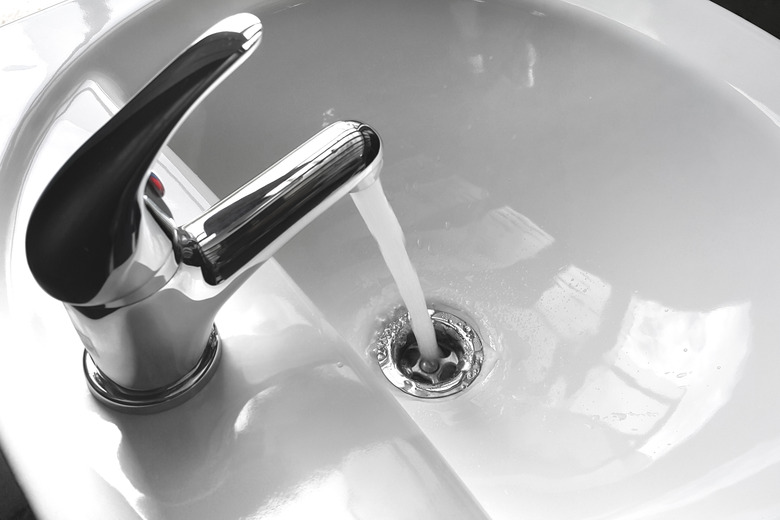How Do I Drill On A Ceramic Porcelain Sink?
We may receive a commission on purchases made from links.
Ceramic porcelain is one of the most popular materials for a bathroom sink. But sometimes their older designs become less suitable. Rather than replacing a whole sink at great expense and inconvenience, you can make alterations to it at home. Drilling a hole into your ceramic porcelain sink can sound like a frightening prospect, but if you follow the correct method, you can undertake this renovation safely and achieve the best possible results.
Tip
Using tape over the hole to minimize slipping, choosing a harder drill bit and keeping your sink as cool as possible can all help make drilling a ceramic sink easier.
Why You'd Need to Drill Ceramic Porcelain
Why You'd Need to Drill Ceramic Porcelain
Ceramic sinks offer a classic look to any kitchen or bathroom, but they're also quite expensive and can be difficult to replace. This means if you end up with a ceramic sink that's not ideal in your home, you could be in a bind. Replacing the faucet on an older sink model can help update it for modern life. To do this, though, you'll likely need to drill a bigger hole in the top of your sink. This can be done, but since porcelain ceramic is such a hard material, specific tools and techniques are required.
Drilling a Ceramic Porcelain Sink
Drilling a Ceramic Porcelain Sink
It's a good idea to first mark out where you want your hole drilled using duct tape. This will show you where to drill and will help prevent your drill from slipping on the smooth surface of the porcelain. You'll need to use a carbide or diamond-tipped drill bit on your sink as it's the hardest drill tip out there. Using the correct shape of drill bit can also make a difference in terms of both speed and precision.
You can then start drilling in your designated spot. Sink Engineering emphasizes the importance of not pushing your drill too hard, which can cause the porcelain to crack. Using a 90-degree angle will help keep the edges of the new hole as smooth as possible. You should drill in 30-second intervals and wipe away any dust and debris in between drilling.
Taps UK recommends stopping when you're around 3 millimeters shy of finishing the hole and using a center push and a hammer to carefully tap through to create a neater finish. If the hole still looks as though it has sharp or uneven edges, you can finish your hole using a file.
Precautions When Drilling Ceramic Porcelain
Precautions When Drilling Ceramic Porcelain
It's essential that when you're drilling a ceramic porcelain sink, you must wear safety goggles. Small pieces of porcelain will be flying around, and if they enter your eye, they can cause a lot of pain and possibly damage, as Atlas Ceramics explains.
Another important safety aspect to consider is overheating. The friction of a drill on a ceramic porcelain sink can create heat. It's important to mitigate this as temperatures that are too high could cause the porcelain to crack. Taking breaks in between short bursts of drilling and keeping a damp cloth on hand to wipe the area and allow it to cool can prevent this from happening.
The edges of your porcelain hole can be very sharp. Using a file to smooth them down is essential, but it can also be useful to wear safety gloves during this process to prevent any cuts.
